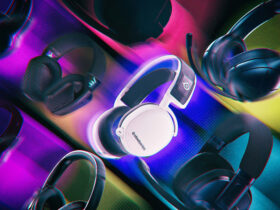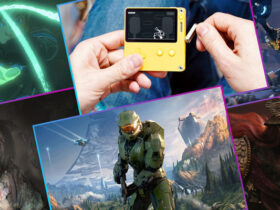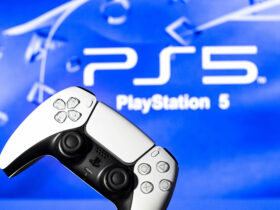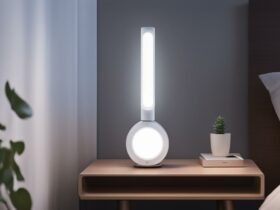Are you wondering how many Bluetooth devices you can connect to your smartphone, laptop, or smart home device? You’re not alone. As our lives become increasingly wireless, Bluetooth connectivity has become a crucial feature in many electronic devices.
Knowing the maximum number of Bluetooth devices that can be connected to a single device can enhance your experience and streamline your digital life. In this comprehensive guide, we’ll explore the factors that can impact Bluetooth connectivity and the strategies to maximize the number of connected devices.
Key Takeaways
- Bluetooth technology allows devices to connect and exchange data wirelessly.
- Bluetooth device limitations can affect the number of devices that can be connected.
- Different Bluetooth connection types and device classes can impact the maximum number of connected devices.
- Pairing and bonding processes affect security and device connection limits.
- The maximum number of Bluetooth connections can vary based on operating systems, devices, and Bluetooth versions.
Understanding Bluetooth Technology
Before we explore the maximum number of Bluetooth devices that can be connected, let’s first understand the basics of Bluetooth technology. Bluetooth technology is a wireless communication standard that allows devices to connect and exchange data seamlessly. It uses radio waves to communicate between devices and has a short-range, typically up to 30 feet (10 meters).
Bluetooth technology was first introduced in 1994 by Ericsson, a Swedish telecommunications company, and has since evolved to become a ubiquitous feature in modern devices, such as smartphones, laptops, and wireless headphones. It is energy-efficient and requires minimal power to operate, making it ideal for battery-powered devices.
Note: The name “Bluetooth” is derived from the 10th-century Danish King Harald Bluetooth, who was known for unifying various Danish tribes into a single kingdom. The name was chosen to reflect the technology’s ability to unify different devices into a single network.
Bluetooth technology has evolved over the years, with newer versions offering faster data transfer rates, longer range, and improved security features. The current version of Bluetooth is Bluetooth 5.2, which was released in 2019.
Bluetooth Profiles
Bluetooth technology uses profiles to define how different devices communicate with each other. A profile is a set of rules that governs how a particular type of device should communicate with other devices. For example, the Hands-Free Profile (HFP) is used for communication between a mobile phone and a hands-free device, such as a car’s Bluetooth system. The Audio/Video Remote Control Profile (AVRCP) is used for controlling audio and video playback between devices.
There are many Bluetooth profiles available, each designed for a specific purpose. Devices must support the same profile to be able to communicate with each other. Most modern devices support a wide range of Bluetooth profiles, making them compatible with a variety of other devices.
Now that you have a basic understanding of Bluetooth technology, let’s explore the factors that can affect the number of devices that can be connected in the next section.
Bluetooth Device Limitations
While Bluetooth technology offers numerous benefits, it has some limitations that affect the number of devices that can be connected. These limitations include:
- Device specifications: The number of devices that can be connected may vary depending on the specifications of the device. High-end devices often have better hardware that can handle more connections.
- Bluetooth version: The version of Bluetooth also affects the number of devices that can be connected. Bluetooth 4.0 and above have improved connectivity and can handle more devices than earlier versions.
- Interferences: The presence of other wireless devices or obstacles can also affect the number of devices that can be connected through Bluetooth.
Bluetooth Device Limitation facts:
To help you understand how these limitations affect the number of devices that can be connected, here is a table detailing the maximum number of devices that can be connected based on Bluetooth versions:
| Bluetooth Version | Maximum Number of Devices |
|---|---|
| Bluetooth 1.x, 2.x | 7 |
| Bluetooth 3.x, 4.x and 5.x | Up to 7 devices for classic Bluetooth and up to 40 devices for BLE. |
“It’s essential to note that even though Bluetooth 5.0 supports up to 40 connections, these connections may experience interferences or signal degradation in areas with high RF activity.”
It’s important to keep in mind that the total number of devices that can be connected may vary depending on the factors mentioned above. As we move forward to the next sections, we will explore the different strategies to maximize Bluetooth connections and overcoming limitations that may hinder the connection experience.
Bluetooth Connection Types
Bluetooth connection types play a crucial role in determining the maximum number of devices that can be connected to your device simultaneously. Let’s take a closer look at the different Bluetooth connection types:
Point-to-Point Connection
This is the most common Bluetooth connection type, where two devices connect directly to each other. A point-to-point connection provides a stable and reliable connection but limits the number of devices that can connect to your device simultaneously.
Broadcast Connection
A broadcast connection allows one device to communicate with multiple devices simultaneously. This connection type is commonly used in advertisements or broadcasts but is not suitable for data exchange and limits the number of connected devices.
Mesh Network Connection
A mesh network connection enables multiple devices to connect and communicate with each other without having a single point of failure. This connection type is commonly used in IoT devices and other complex networks. However, mesh network connections limit the number of connected devices and require specific hardware and software.
Understanding the different types of Bluetooth connections available can help you make informed decisions when connecting devices and optimizing your Bluetooth connectivity.
Bluetooth Device Classes
Bluetooth devices are classified into three primary categories, each with different power classes and corresponding range capabilities.
- Class 1: These are the most powerful Bluetooth devices, with a maximum power output of 100 milliwatts. They can connect to other devices up to 100 meters away, making them ideal for industrial and commercial applications. Examples of Class 1 devices include Bluetooth-enabled printers, scanners, and audio systems.
- Class 2: These Bluetooth devices have a maximum output of 2.5 milliwatts and can connect to other devices up to 10 meters away. Most consumer electronics fall under this category, including smartphones, laptops, and wireless headphones.
- Class 3: These are the least powerful Bluetooth devices, with a maximum output of 1 milliwatt. They can connect to other devices up to 1 meter away, making them ideal for wearable devices such as smartwatches and fitness trackers.
The device class can impact the maximum number of devices that can be connected and the overall performance of Bluetooth connections. Class 1 devices are generally capable of connecting to more devices than Class 2 or 3 devices due to their increased power output and range capabilities.
Bluetooth Pairing and Bonding
Bluetooth pairing and bonding is a process that establishes a secure connection between two Bluetooth devices. Pairing is the initial connection process that occurs when two devices first connect, while bonding is the process of storing the pairing information for future connections.
When you pair two devices, they exchange a unique code to verify their identity and establish a secure connection. This ensures that no unauthorized devices can connect to your device via Bluetooth. Pairing typically involves entering a PIN code or accepting a passcode on both devices.
Tip: Some devices allow for a “simple pairing” process that does not require entering a PIN code.
Once devices are paired, they can be bonded, which means that the pairing information is stored for future connections. This simplifies the connection process for subsequent connections between the same devices, as they can automatically establish a secure connection without the need for additional pairing steps.
The bonding process varies between devices. Some devices may automatically bond when they first pair, while others may require manual bonding via the device settings.
Bluetooth Pairing Modes
There are three different Bluetooth pairing modes: user interface (UI) mode, just works mode, and numeric comparison mode.
- User Interface (UI) Mode: This mode requires user interaction to enter a passkey or PIN to establish a connection. This method ensures a secure connection but can be more time-consuming.
- Just Works Mode: With this mode, no passkey or PIN is required, and the devices automatically establish a connection. This method is convenient but less secure than UI mode.
- Numeric Comparison Mode: This mode requires the user to compare two sets of numbers displayed on each device’s screen to verify that the correct devices are connecting. This method is the most secure but can be confusing for some users.
Factors Affecting Bluetooth Pairing and Bonding
Several factors can affect Bluetooth pairing and bonding, including:
- Device compatibility
- Bluetooth version
- Signal strength
- Interference from other devices
- Device settings
It is important to ensure that both devices are compatible and have the same Bluetooth version to establish a successful connection. Additionally, maintaining a strong signal and minimizing interference from other devices can improve pairing and bonding reliability.
By following proper Bluetooth pairing and bonding procedures and ensuring device compatibility, you can establish a secure connection and simplify the process for future connections.
Maximum Number of Bluetooth Connections
Are you wondering how many Bluetooth devices can be connected to your device at once? The maximum number of Bluetooth connections depends on several factors, including the device’s specifications, Bluetooth version, and the connection types used.
Most operating systems, including iOS, Android, and Windows, support up to seven active Bluetooth connections simultaneously. However, keep in mind that each device’s specifications may vary, and some devices may support fewer connections.
If you need to connect more than seven devices, you may need to upgrade your Bluetooth version. Bluetooth 5.0, released in 2016, can support up to 20 connections simultaneously. Devices using older Bluetooth versions, such as 3.0 or 4.0, may only support up to five or eight connections.
The type of connection used can also affect the maximum number of devices that can be connected. Point-to-point connections, which connect two devices directly, typically allow for more simultaneous connections than broadcast connections, which transmit data to multiple devices at once. Mesh networks, which use multiple devices to create a network, can support even more simultaneous connections.
Overall, the maximum number of Bluetooth connections you can have depends on various factors. However, by understanding the limitations and strategies to optimize your connections, you can make the most out of your Bluetooth connectivity and enjoy the freedom of wireless convenience.
Strategies to Maximize Bluetooth Connections
If you want to connect multiple devices simultaneously, it’s essential to employ effective strategies that can help you maximize Bluetooth connections. Here are some tips:
- Prioritize devices: When connecting multiple devices, it’s vital to prioritize them based on their importance. Connect your frequently used devices first and then add others as needed.
- Manage power consumption: Bluetooth connections can drain your device’s battery quickly. To conserve power, turn off Bluetooth when not in use, or switch to low-energy Bluetooth when possible.
- Use a Bluetooth hub: If your device has limited Bluetooth connectivity, consider using a Bluetooth hub. A hub connects to your device and enables multiple connections simultaneously.
- Keep devices close: Bluetooth connections work best when devices are close to one another. Keep your connected devices within the recommended range to maintain a stable connection.
- Use the latest Bluetooth version: The latest Bluetooth versions offer better connectivity and support for multiple devices. Upgrade to the latest version whenever possible.
By implementing these strategies, you can improve Bluetooth connectivity and maximize the number of devices you can connect to your device.
Troubleshooting Bluetooth Connection Issues
Bluetooth connectivity issues can be frustrating, but don’t worry, there are several troubleshoots to try before giving up on your Bluetooth device. Here are a few tips to help you get your devices connected:
- Ensure that your devices are within range: Bluetooth range is typically around 30 feet. If your device is out of range, it won’t be able to connect. Move closer to the device you are trying to connect to and try again.
- Turn Bluetooth off and on: Sometimes turning your Bluetooth off and back on can reset your connection and resolve any issues.
- Check your device’s Bluetooth compatibility: Make sure that the device you are trying to connect is compatible with Bluetooth technology. Some devices may not be compatible with newer Bluetooth versions, which can cause connection issues.
- Restart your devices: Like turning Bluetooth off and on, restarting your devices can reset the connection and restore functionality.
- Remove any obstacles: Physical obstructions such as walls or objects can interfere with Bluetooth signals. Try to remove any obstacles between your devices to improve connectivity.
Still having issues?
If you’ve tried the above steps and are still experiencing issues, you may need to try some of the following fixes:
| Issue | Possible Fix |
|---|---|
| Device won’t pair with Bluetooth | Ensure that both devices are discoverable and try again. If the issue persists, try unpairing and re-pairing the devices. |
| Audio quality is poor | Try moving the devices closer together or to a location with better signal strength. If the audio quality is still poor, the issue may be with the device’s audio settings or hardware. |
| Connection drops frequently | Try turning off other Bluetooth devices in the area to eliminate interference. If the issue persists, there may be an issue with the device’s Bluetooth hardware. |
Remember, Bluetooth connectivity issues can be caused by a variety of factors and may require different solutions. Be patient, try different fixes, and don’t hesitate to seek professional help if needed!
Advancements in Bluetooth Technology
Bluetooth technology has come a long way since its inception in the late 1990s. From simple wireless connectivity between devices, Bluetooth has transformed into a robust communication standard that enables a diverse range of applications. Recent advancements in Bluetooth technology have expanded connection possibilities and unlocked new use cases.
The latest iteration of Bluetooth, Bluetooth 5.0, introduced a range of enhancements that make it more powerful and versatile than ever before. One of the key features of Bluetooth 5.0 is its increased range, which allows for connectivity over longer distances and through walls. The enhanced data transfer rate and improved security protocols also make Bluetooth 5.0 suitable for a wider range of applications.
Another exciting development in Bluetooth technology is the emergence of Bluetooth Low Energy (BLE). BLE is a variant of Bluetooth designed specifically for low-power devices that require long battery life, such as fitness trackers, wearables, and IoT devices. Compared to traditional Bluetooth, BLE consumes significantly less power, making it ideal for devices that operate on small coin-cell batteries.
Benefits of Advancements in Bluetooth Technology
The advancements in Bluetooth technology have several benefits for users:
- Better Connectivity: The improved range and data transfer rate of Bluetooth 5.0 provide a better and more reliable connection between devices. This means fewer dropouts and interruptions during data transfer, resulting in a smoother and more seamless user experience.
- Increased Efficiency: BLE’s low power consumption means longer battery life for devices and lower maintenance costs for users. This makes BLE suitable for a variety of applications, including remote sensors, smart home devices, and healthcare wearables.
- Wider Compatibility: Bluetooth 5.0’s backward compatibility with earlier versions of Bluetooth means that users can connect and communicate with a wide range of devices, including legacy devices. BLE’s compatibility with existing Bluetooth technology also makes it easier for developers to integrate BLE into their products.
The advancements in Bluetooth technology are opening up new possibilities for wireless communication and device connectivity. With the introduction of Bluetooth 5.0 and BLE, users can expect faster, more reliable, and more efficient wireless communication in the future.
Best Practices for Bluetooth Device Management
Managing multiple Bluetooth devices can be a daunting task, but with the right techniques and strategies in place, you can make the most of your Bluetooth connections. In this section, we explore best practices for Bluetooth device management that can help you enhance your connectivity and streamline your experience.
Organizing Your Devices
One of the most effective ways of managing Bluetooth devices is by organizing them based on priority and frequency of use. Create a list of devices that you use most often and categorize them based on their purpose. For example, you can have a separate list for audio devices, input devices, and smart home devices.
You can also give each device a unique name to make it easier to identify them during pairing and connection. Additionally, you can use labels or color-codes for your devices to make them more visually distinguishable and aid in organizing them.
Controlling Your Devices
While Bluetooth devices offer convenience, it’s important to keep control of your connections to avoid any unauthorized access and ensure proper functioning. You can manage your Bluetooth devices effectively by taking the following measures:
- Turning off Bluetooth when not in use to conserve battery power and reduce the risk of unauthorized access
- Reviewing your connected devices periodically to ensure they are still relevant and removing any outdated or unused devices
- Securing your devices with passwords or PINs that are difficult to guess to prevent any unauthorized connections
- Disabling automatic connections to avoid connecting to devices that you don’t intend to use
Maintaining Your Devices
Proper maintenance is crucial to ensure optimal performance and longevity of your Bluetooth devices. Some best practices for maintaining your devices include:
- Keeping your devices clean and free of dust and debris
- Charging your devices regularly to prolong battery life
- Updating your device software and firmware to ensure compatibility and security
- Storing your devices in a safe and dry place to prevent damage from moisture and extreme temperatures
Conclusion
By following these best practices for Bluetooth device management, you can take full advantage of your Bluetooth connections and maintain control over your devices. With organized, well-controlled, and maintained devices, you can enjoy seamless connectivity and enhance your overall Bluetooth experience.
Conclusion
After reading this guide, you now have a better understanding of the maximum number of Bluetooth devices that can be connected to a single device.
Maximize Your Bluetooth Connectivity
By understanding Bluetooth technology and device limitations, you can take advantage of different connection types and device classes to connect as many devices as possible. Additionally, implementing strategies to manage your Bluetooth devices efficiently and troubleshooting common connectivity issues can help maximize your Bluetooth connections.
Embrace Emerging Technologies
As Bluetooth technology continues to advance, we can expect new possibilities and expanded connectivity options. Keep up with the latest advancements, such as Bluetooth 5.0 and Bluetooth Low Energy (BLE), to fully leverage the capabilities of your devices.
Unleash the Full Potential of Your Devices
With the ability to connect multiple devices wirelessly, Bluetooth technology offers unprecedented convenience, mobility, and utility. By following best practices for Bluetooth device management, you can unleash the full potential of your devices and enjoy a seamless wireless experience.
Thank you for reading this guide and we hope you found it informative and helpful. Harness the power of Bluetooth connectivity and stay connected like never before!
FAQ
How many Bluetooth devices can be connected to a single device?
The maximum number of Bluetooth devices that can be connected to a single device depends on various factors such as device specifications, Bluetooth version, and operating system limitations. There isn’t a universal limit, but most devices can connect to multiple Bluetooth devices simultaneously.
What is Bluetooth technology?
Bluetooth technology is a wireless communication standard that allows devices to connect and exchange data seamlessly. It’s commonly used for connecting devices such as smartphones, headphones, speakers, and fitness trackers.
What are the limitations of Bluetooth devices?
Bluetooth devices have some limitations that can affect the number of devices that can be connected. Factors such as device specifications, Bluetooth version, and interferences can impact the maximum number of devices that can be connected simultaneously.
What are the different types of Bluetooth connections?
There are different types of Bluetooth connections, including point-to-point, broadcast, and mesh networks. Each connection type has its own characteristics and can affect the number of devices that can be connected simultaneously.
How do Bluetooth device classes affect connectivity?
Bluetooth devices are categorized into different classes based on their range capabilities. The class of a device can impact the maximum number of devices that can be connected and the overall performance of Bluetooth connections.
What is Bluetooth pairing and bonding?
Bluetooth pairing is the process of establishing a connection between two devices. Bluetooth bonding is a security measure that allows devices to store information about each other for easier and more secure connections. Both pairing and bonding influence the number of devices that can be connected.
How many Bluetooth devices can be connected to a single device?
The maximum number of Bluetooth devices that can be connected to a single device varies depending on factors such as operating systems, devices, and Bluetooth versions. Some devices can handle more connections than others, so it’s best to check the specifications of your specific device.
How can I maximize my Bluetooth connections?
To maximize your Bluetooth connections, you can prioritize devices, manage power consumption, and consider using Bluetooth hubs. These strategies can help you connect as many devices as possible and optimize your Bluetooth experience.
What should I do if I encounter Bluetooth connection issues?
If you encounter Bluetooth connection issues, there are troubleshooting tips you can follow to resolve common problems. These tips can help you overcome obstacles that may limit the number of devices you can connect.
What are the advancements in Bluetooth technology?
Bluetooth technology is constantly advancing. Newer versions like Bluetooth 5.0 and Bluetooth Low Energy (BLE) are expanding connection possibilities and improving performance. Stay updated with the latest advancements to enjoy the benefits of enhanced Bluetooth connectivity.
What are the best practices for managing Bluetooth devices?
To efficiently manage your Bluetooth devices, you can organize, control, and maintain them using best practices. These practices can help you have a seamless Bluetooth experience and ensure all your devices are working optimally.















